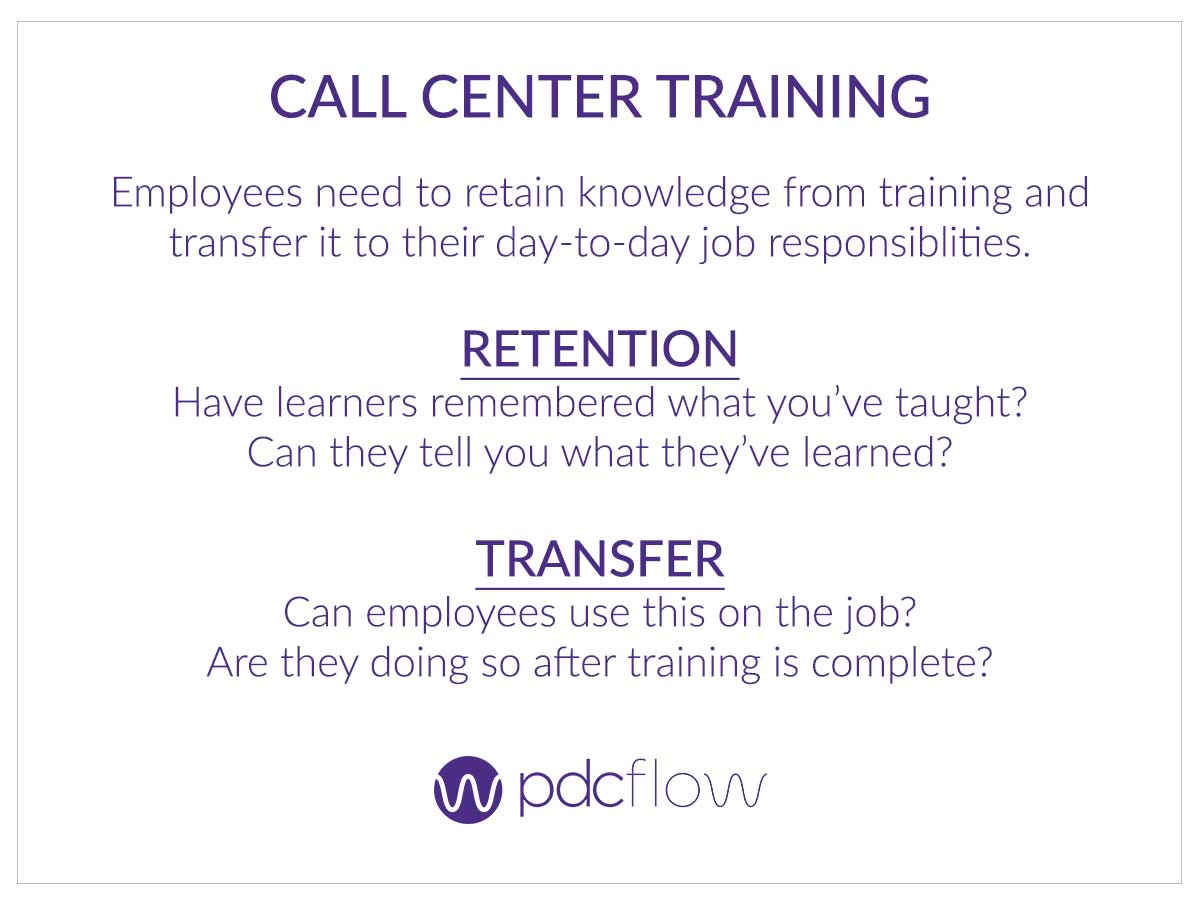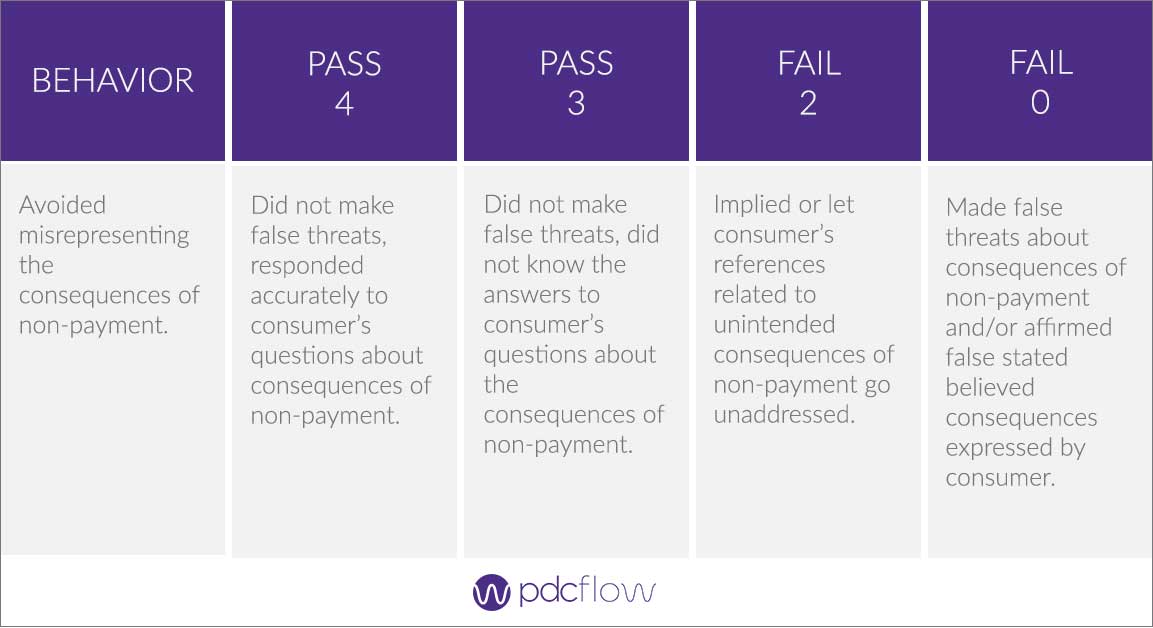Call center training is complex. Especially for those in accounts receivable. Not only must you set expectations for the job and explain daily processes – you must also teach agents how to remain compliant with rules and regulations.
Debra Ciskey, Executive Vice President and Roger Weiss, President at The Collections Coach, recently gave a presentation for the CAC virtual conference on the best way to create an effective training program. They discussed presenting information in an easy-to-understand format and how to test knowledge retention both during training and through continuous evaluations.
Improving Your Call Center Training Programs

Microlearning: Teach How People Learn Best
“Microlearning is what we have embraced as we’ve created our modules for The Collections Coach,” says Ciskey. “In the training world this is also called ‘chunking.’”
It is a way of teaching and delivering content to learners in small, very specific bursts. With this type of training system, learners may even be in control of what and when they’re learning.
Ciskey explains that call center training programs should use microlearning training courses to ensure information is properly absorbed.
“Microlearning helps us to deliver training in a way that’s adjustable, understandable and usable.” Debra Ciskey
There are several important benefits that come along with this type of training.
Flexibility
- Classes that provide short bursts of information can fit into any work schedule.
- If you provide classes in a platform learners can access independently, they can self-guide their learning.
- You can use microlearning for teachable moments when you notice a behavior that should be addressed. Direct call center agent training to a module that corresponds with the behavior you’d like to correct.
- Rather than sitting through hours of instruction based around regulation or other complex subjects, chunking information into smaller sessions is more effective for retention. This also gives staff the ability to learn when they are in the best frame of mind.
Learner Engagement
- People do not have long attention spans. If you offer training materials in short bursts, people will pay attention to the whole lesson.
- Employees will not feel fatigued or overwhelmed after marathon training sessions.
Increased Knowledge Retention
- Using repetition throughout multiple modules helps increase knowledge retention.
- Microlearning also relates new information to old information by chaining together themes and content in separate courses.
Allows for Spaced Learning
- Provides the learner time between courses to think about course content.
- Gives staff the chance to apply what they’ve learned before piling more concepts on top.
- Applying pieces of a course separately makes it easier to add more complex concepts later.
Is Your Subject Matter Microlearning Friendly?
Depending on what you are trying to teach, you may find it difficult to transition to the microlearning format. Before you decide to overhaul your training program, you must determine how your material can be taught in short bursts. Microlearning is for you if you can:
- Relate - Can you relate concrete examples to your subject?
- Chunk - Can you break larger courses into smaller content modules?
- Build - Can your subject be built into a series?
- Provide - Can you provide a workbook or supplementary materials to help with learning and retention?
- Publish - Do you have the ability to publish an online or paper reference tool that learners can access on demand?
Presentation
Memorable Presentations
Even if a course is short, you can lose your audience if you don’t try to capture their attention. Use an excited, interesting narrator for recorded lessons. Also add animation, photos, videos and other visual elements to capture viewer attention.
In live classes, build in time for discussions, real-world examples and quizzes. If courses are recorded, engagement can still be accomplished through reflection prompts, quizzes and examples of real-world application of concepts.
“One of the key points that really reinforces the learning is having post-training or post-module discussion with a trainer, with a manager or with learners that have gone through the same training.”Debra Ciskey
The 90/20/10 Rule
Ciskey suggests presenting your call center training material in short, focused courses using the 90/20/10 rule. This rule is designed to maximize knowledge retention by presenting information in a learning-friendly format.
The rule states that people can handle about 90 minutes without a break. However, the content presented during this time should be broken up into 20 minute sessions. During this time, you should build in chances for student interaction every 10 minutes to keep learners engaged and alert.
Ciskey says microlearning sessions should be even shorter. These courses should be no longer than 20 minutes apiece, with built-in time for interaction at the 10 minute mark.
Sometimes it’s not possible to add a chance for interaction into a lesson. In these cases, it’s best to keep microlearning sessions to eight minutes or less.

Throughout the training process, also be sure you revisit key materials at least six times. If you notice collectors aren’t following through on the concepts you cover, this is an opportunity for you to revisit the information.
“A lot of times you can make that retention stronger and memorialize it by writing it down and giving it to your agents,” says Weiss. This provides an even stronger connection between the training material and how it applies to concrete concepts like compliance or following call policies and procedures.
How to Measure Success
Training Quizzes
During the training process, quizzes help you assess how well learners are retaining information. Instead of long, drawn out classes with comprehensive exams, it is much more effective to pair your microlearning modules with micro assessments.
Ciskey also suggests scenario-based questions to help learners apply the knowledge from their courses to real-life situations with consumers. This reinforces concepts, ensures compliance and encourages positive behaviors.
Call Evaluations
Of course, continued evaluation is an important part of employee maintenance. How are you planning to measure agent performance? Ciskey says to create your evaluation criteria by thinking of the end in mind, considering the following points:
- What are the desired behaviors that you want to reinforce through call evaluations and feedback?
- Customer service
- First call resolution
- Verbatim delivery of scripts
- Delivery of accurate information
- Meeting client-specific requirements
Measuring Behaviors and Key Performance Indicators
To measure how your employees are doing, you must identify the key performance indicators (KPIs) that are important to your call center. List the skills, actions, behaviors and regulatory or litigation-related tactics you want to observe.
Create a grading scale for each item you are monitoring, and clearly communicate how each level of grading is achieved. Using this call monitoring rubric is one of the best ways to standardize the process no matter who is taking the call or performing the evaluation.

Do you need to overhaul your training program? Do you want to make it easier for your agents to train at their own pace?
Download the Call Center Training and Evaluation How-To for an outline of the basics of microlearning. Also learn what tools you'll need to create an engaging course presentation and how to evaluate learning outcomes.





